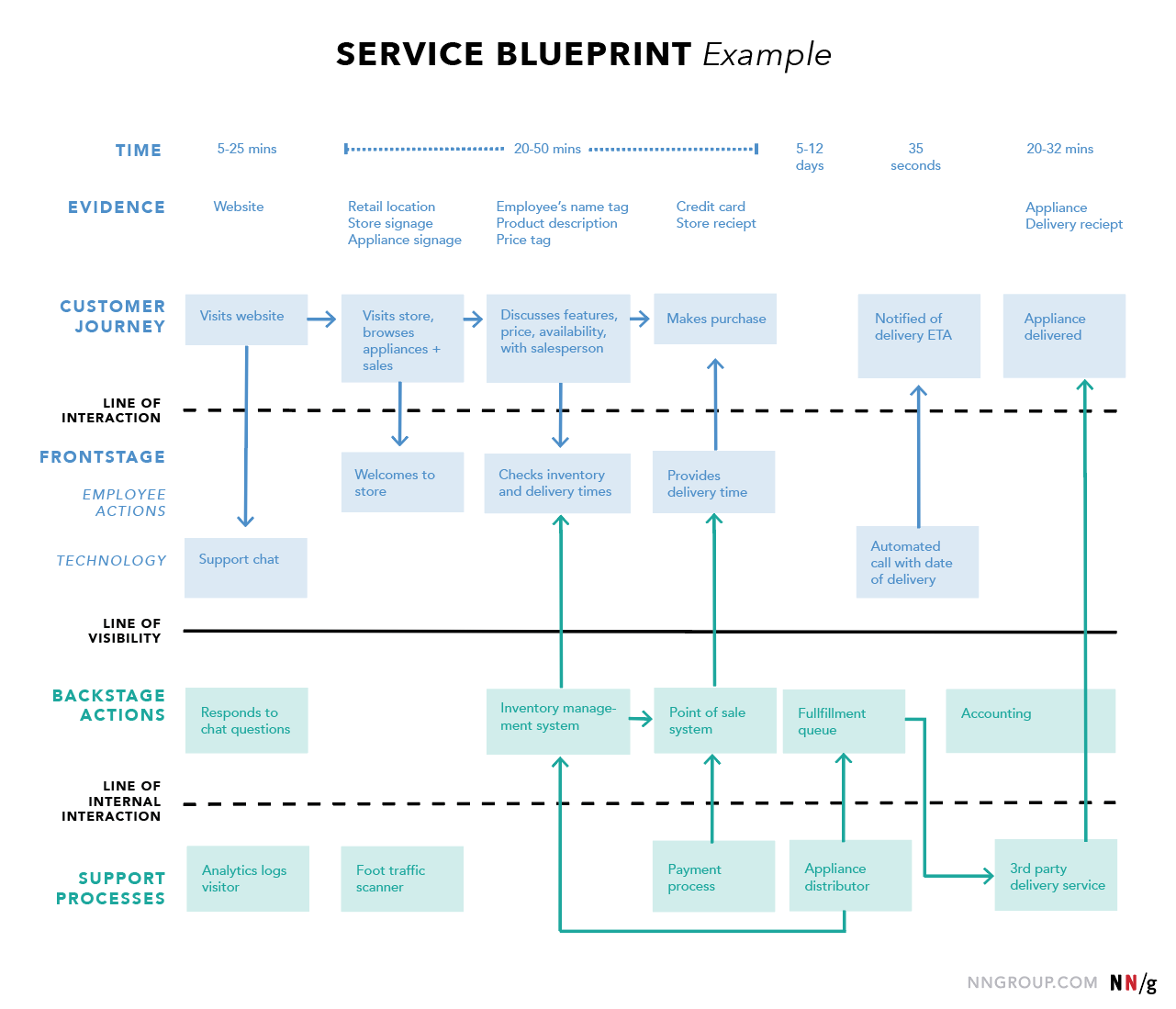
Webinar: How Does the Federal Budget Approach Digital Nation-Building?


Corrina Tang
February 3, 2025
When modernizing a digital government service, it can be challenging to fully understand the scope of the work and its challenges.
Canada's National Defence Digital Services Group (DSG) faced this very issue. They needed a clearer picture of their services and processes to effectively advance their critical work in data management, cybersecurity and digital services. The stakes were high, and understanding their current state was a necessary first step.
That's where service blueprints came into play.
Last year, I was brought onto a project with DSG as a service designer. DSG was formed to unify the Chief Information Officer Group (CIOG) and the Digital Transformation Office (DTO). DSG plays a pivotal role in advancing digital transformation within the Department of National Defence (DND) and the Canadian Armed Forces (CAF).
When I first joined the team, I quickly recognized the need for a better understanding of their services and processes. Documenting how services operate across touchpoints is essential to achieving DSG’s goals of modernization and efficiency. To address this, I introduced and advocated for service blueprints.
A service blueprint is a visualization of the steps, touchpoints and behind-the scenes processes involved in delivering a specific service. They help teams identify inefficiencies, gaps and opportunities for improvement. Fundamentally, a service blueprint includes:

“The service blueprint approach that Corrina brought to the team not only helped bring clarity to what was and what was not working with our business processes, but introduced a new tool into our transformation toolkit. While we applied this approach internally, the benefits will only amplify once applied more broadly.” – Michel Mainville, Deputy Director, Application Portfolio Management and Architecture
Alignment and clarity are key for an organization tasked with modernizing digital services across a complex structure like the DSG. I worked closely with teams managing the software procurement intake process, which was previously unstandardized and operated somewhat like a black box.
The team was struggling with a lack of awareness or shared understanding of the intake process. By introducing service blueprints, I helped them uncover blind spots, surface assumptions, and visualize processes. This created a foundation for open discussion and strategic planning.
Service blueprints offer several benefits that make them an invaluable tool:
It’s common to see service blueprints and customer journey maps used interchangeably, but they serve different purposes.
Customer journey maps are ideal for capturing and understanding a customer’s experience. They:
Service blueprints dig deeper into the processes and structures that lead to those experiences. They:
When I began working with DSG, it was evident that the organization needed to align stakeholders on the value that they brought to their clients. Service blueprints helped the team clarify responsibilities and identify areas where there were gaps or areas of improvement. They provided a way to:
The blueprinting process highlighted opportunities for possible automation and integration and ensured that DSG could focus its efforts where it mattered most.
“The blueprint work led by Corrina allowed us to untangle the complex and inconsistent way we were engaging with stakeholders to find a clear path through. While we are still using rudimentary technology to enable the process, the clarity we now have about how work flows through our governance will be crucial for our subsequent phases of transformation and eventually automation, where possible.” – Michel Mainville, Deputy Director, Application Portfolio Management and Architecture
Tools like service blueprints are essential to making invisible processes visible in digital transformation work.
For organizations like Canada’s National Defence and the Digital Services Group, this clarity is critical to modernizing services, improving collaboration and building systems that work for users and internal teams.
If you’re looking to drive similar improvements in your organization, get in touch today!
Nielsen Norman Group’s Definition on Service Blueprints
End of articles list